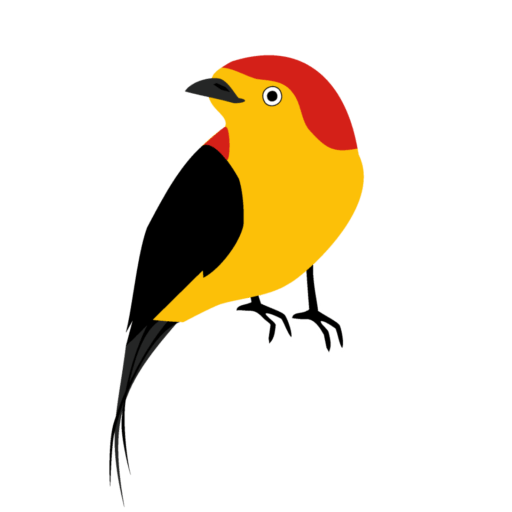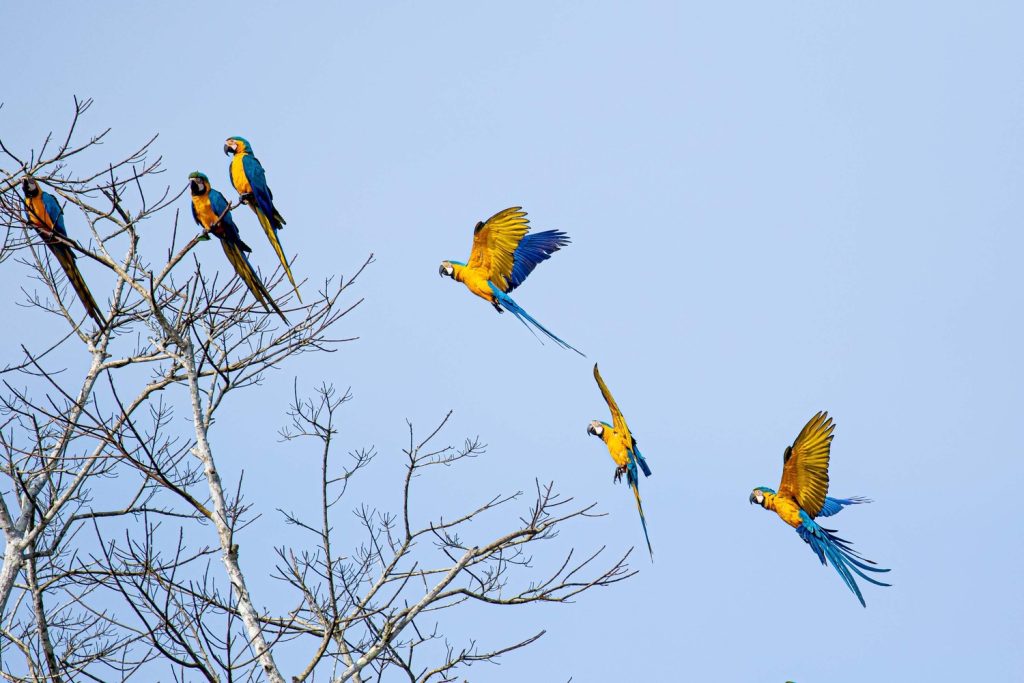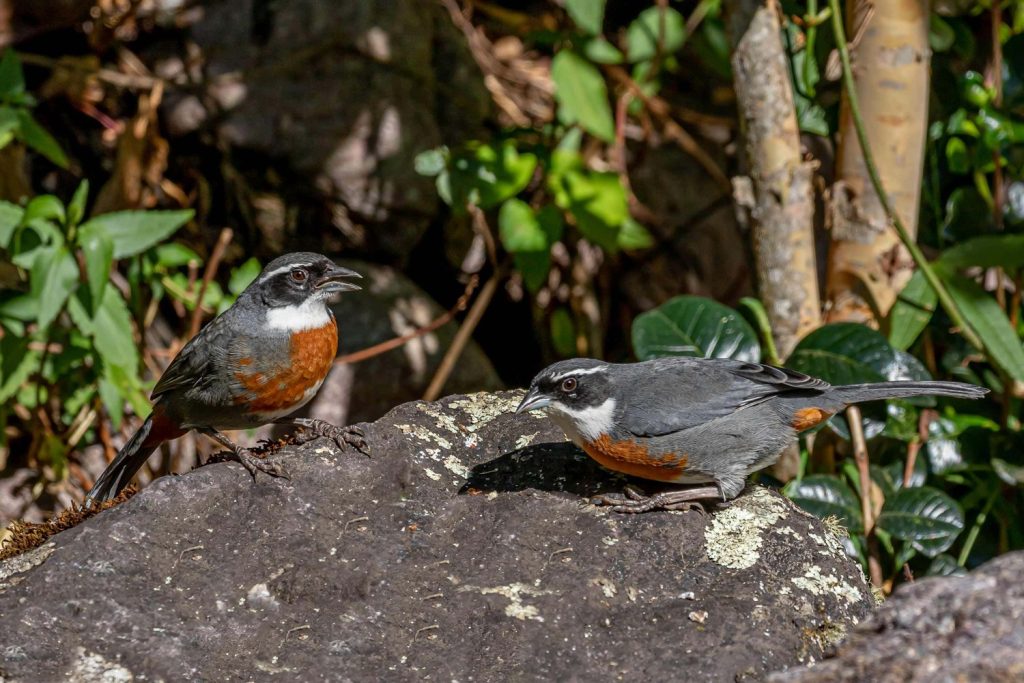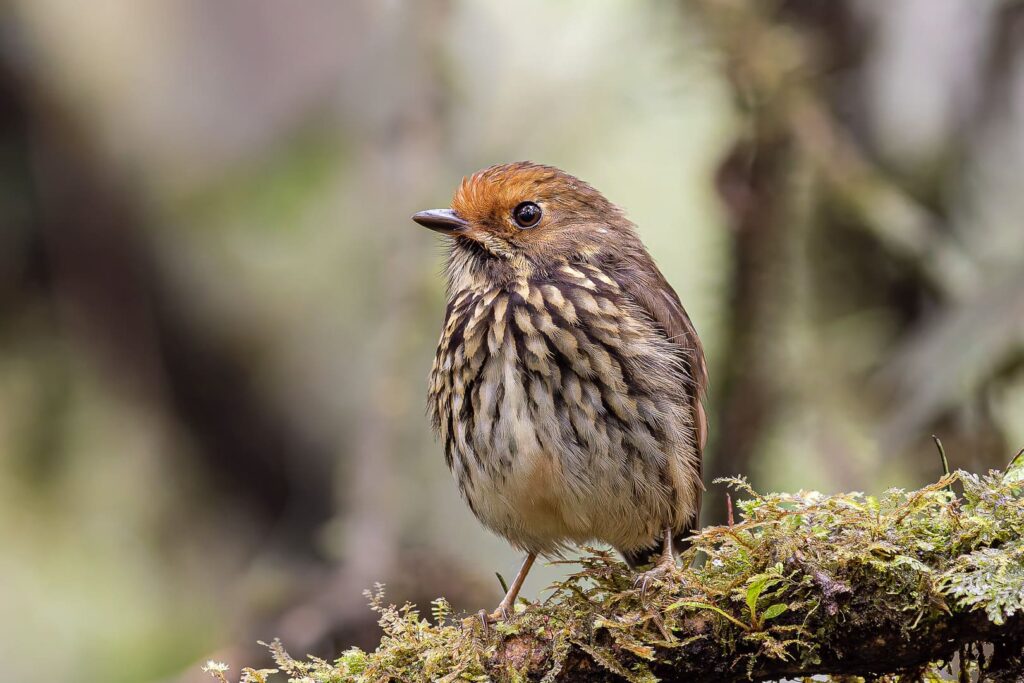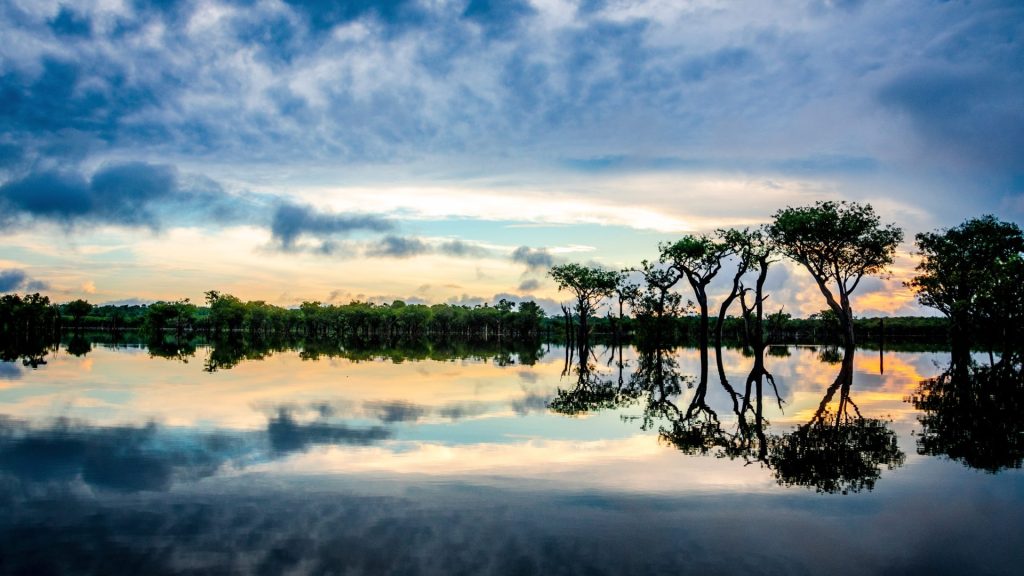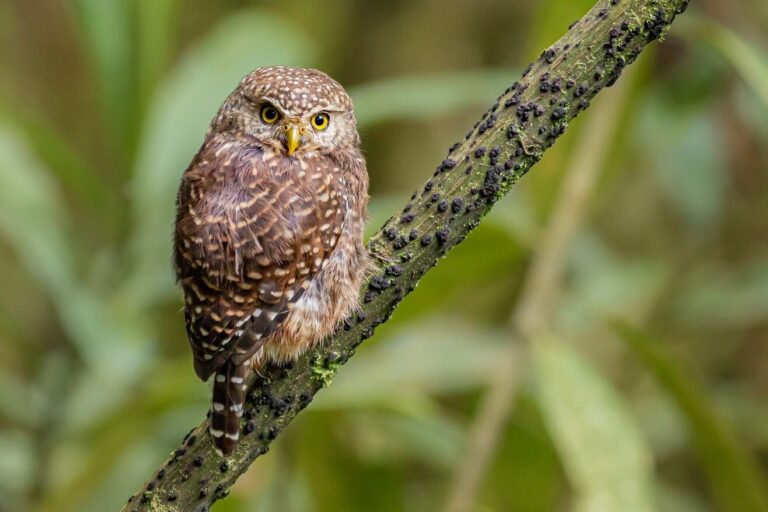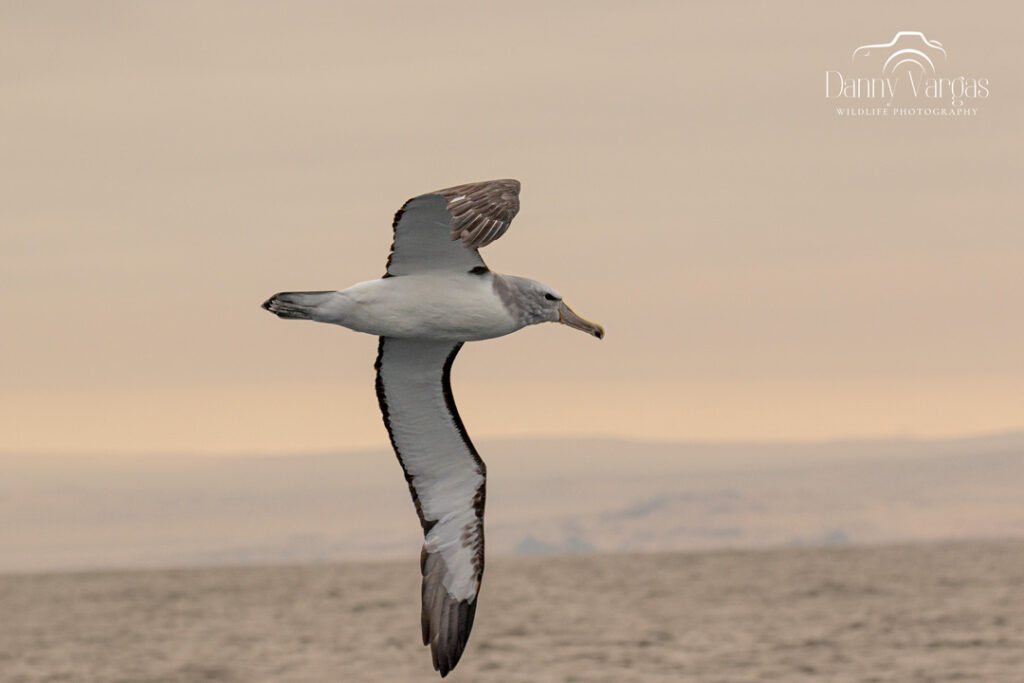Wayquecha Lodge: A Birdwatcher’s Paradise in the Upper Manu Road
Perched at 2,900 meters (9,500 feet) above sea level in the pristine cloud forests of southeastern Peru, Wayquecha Lodge is a must-visit destination for birdwatchers exploring the legendary Manu Road. This unique eco-lodge is strategically located in the elfin forests and high-altitude cloud forests, offering unparalleled access to some of the most sought-after Andean bird species. Whether you’re searching for Mountain Tanager´s flocks, Antpittas, Swallow-tailed Nightjar in a very cozy and confortable lodge on the clouds, Wayquecha provides an unforgettable birding experience.
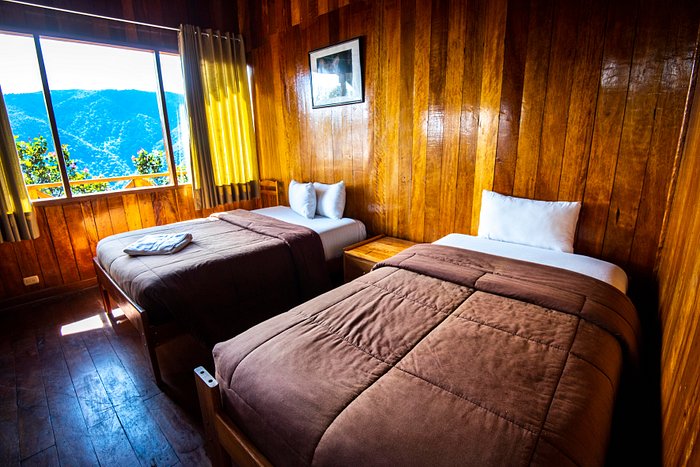
A Gateway to Manu’s High-Altitude Cloud Forest
Wayquecha Lodge is part of a 1,450-hectare private reserve managed by the Amazon Conservation Association, dedicated to scientific research and conservation. Sitting at the transition zone between montane forests and elfin forests, this location offers an incredible variety of microhabitats, making it one of the most productive birding spots in Peru’s Andean region.
Getting to Wayquecha Lodge
Access to Wayquecha Lodge is part of the adventure. The journey begins in Cusco, where birders embark on a spectacular 5-hour drive along Manu Road in one of the world’s most famous birding routes. But the trip generally takes longer than that since there are wonderful habitats for birding along the way like andean lakes, intermountain valleys and puna grassland and finally a very charming colonial town. After, the entrance to the Manu National Park, you will find the way which descends from the Andean highlands, through Polylepis woodlands, puna grasslands and Elfin Forest before reaching the lodge. Along the way, expect to see high-altitude specialties such as the endemics Rusty-fronted Canastero, Chestnut-breasted Mountain-Finch, Creamy-crested Spinetail, additionally you can expect Puna Tapaculo, Andean Flicker, Scribble-tailed Canastero, etc.
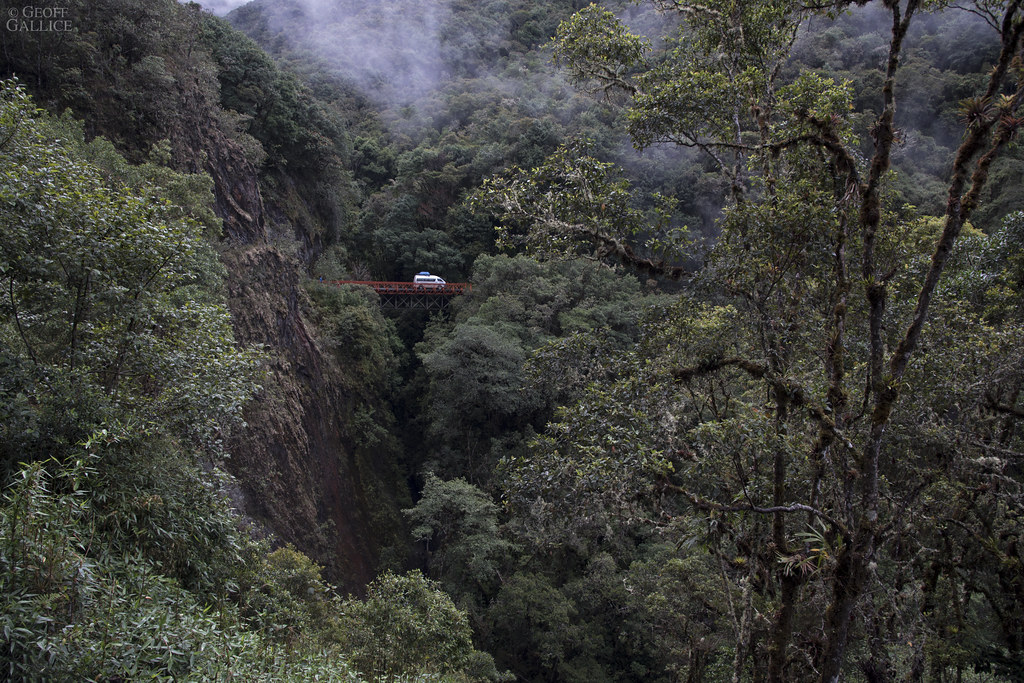
Birding Highlights at Wayquecha Lodge
The Tanager Flocks and Mixed-Species Waves
One of the most exhilarating experiences at Wayquecha is encountering massive mixed-species feeding flocks moving through the canopy. These flocks are dominated by colorful tanagers, flycatchers, and furnariids, including:
- Hooded Mountain-Tanager (Buthraupis montana)
- Grass-green Tanager (Chlorornis riefferii)
- Golden-collared Tanager (Iridosornis jelskii)
- Gray-breasted Mountain-toucan (Andigena hypoglauca)
- Black-faced Brushfinch (Atlapetes melanolaemus)
- Scarlet-bellied Mountain-Tanager (Anisognathus igniventris)
- Chestnut-bellied Mountain-Tanager (Dubusia castaneoventris)
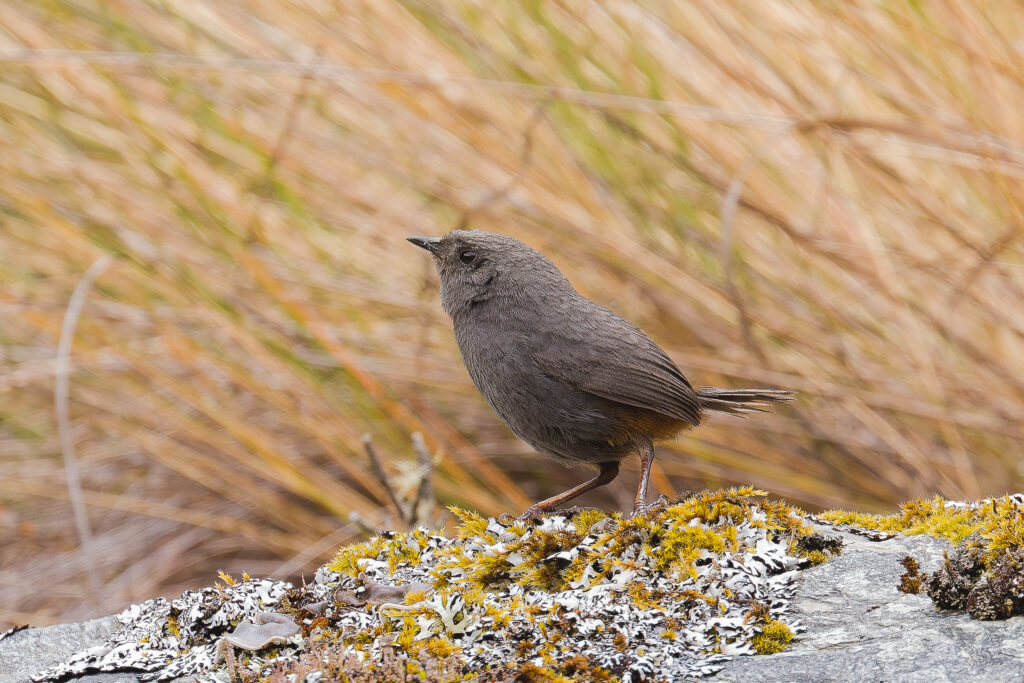

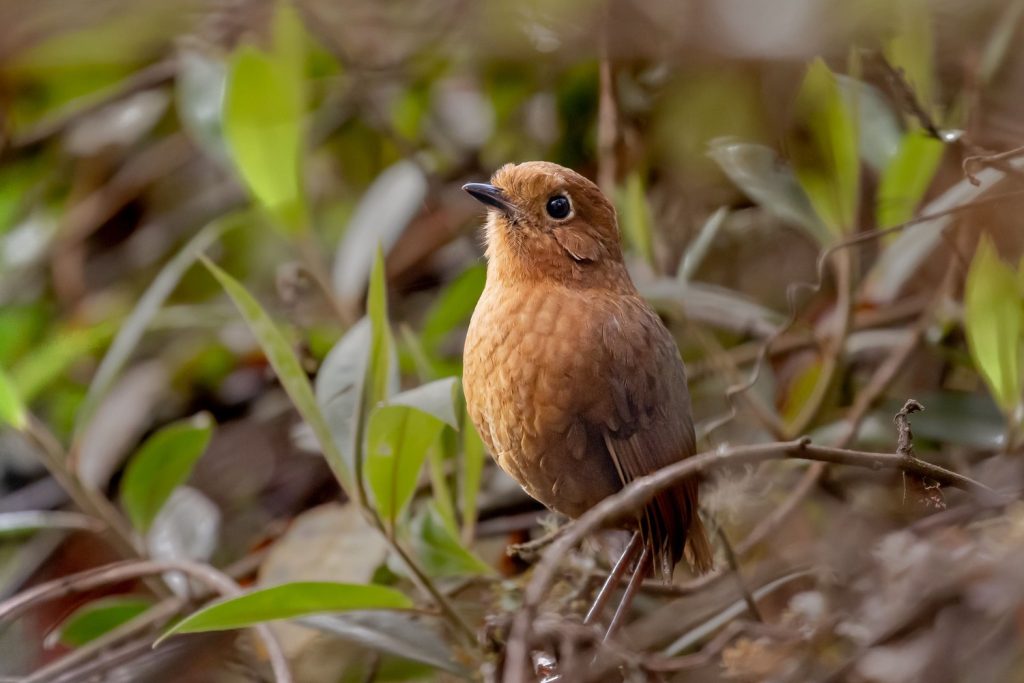
These groups move quickly through the moss-draped branches, providing birders with rapid-fire glimpses of stunning species.
Elfin Forest Specialties
Wayquecha is one of the best places to see birds that thrive in the stunted, mossy elfin forests that cover the higher elevations of Manu Road. These species are often difficult to find elsewhere:
- Marcapata Spinetail (Cranioleuca marcapatae) – a restricted-range endemic
- Red-and-white Antpitta (Grallaria erythroleuca) – an elusive forest dweller
- White-browed Conebill (Conirostrum ferrugineiventre) – often seen with mixed flocks
- Rufous-bellied Bush-Tyrant (Myiotheretes fuscorufus)
- Puna Thistletail (Asthenes helleri)
The damp, mossy understory is also home to Barred Fruiteater & Band-tailed Fruiteater and Mountain Cacique, making for exciting birding opportunities.
Night Birding at Wayquecha Lodge
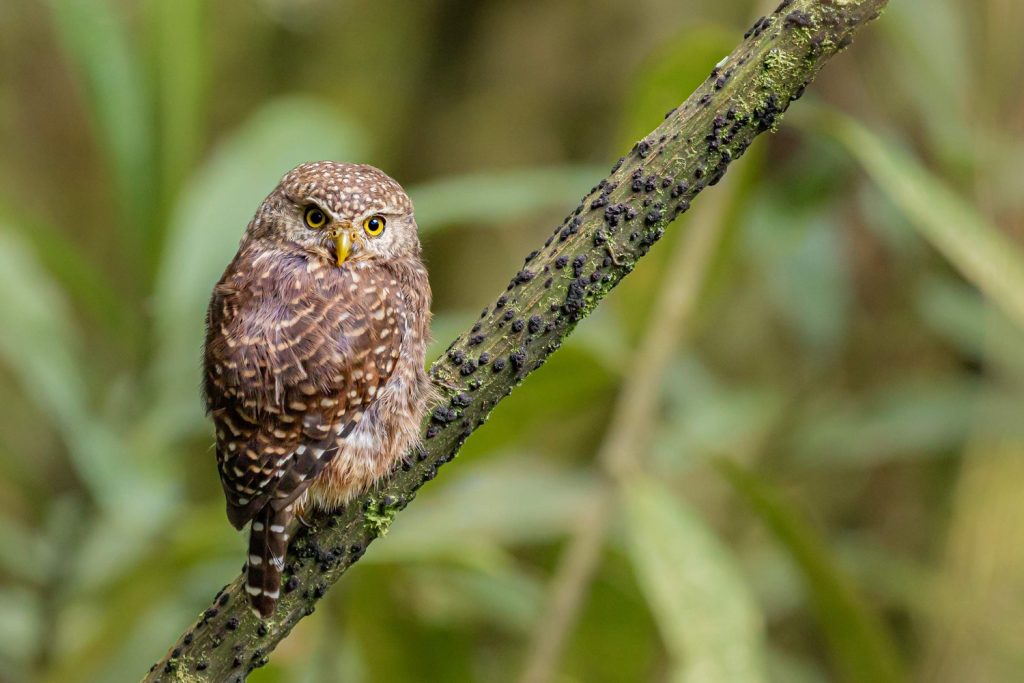
After sunset, the cloud forest takes on a different character, with some of the most enigmatic nocturnal birds becoming active. Wayquecha is a prime location to search for:
- Swallow-tailed Nightjar (Uropsalis segmentata) – males with long, spectacular tail streamers
- Rufous-banded Owl (Strix albitarsis) – heard calling from the forest edge
- Yungas Pygmy-Owl (Glaucidium bolivianum) – a small but fierce predator of mixed flocks but this can be also seen along the day
Equipped with a flashlight and a keen ear, night birding at Wayquecha can yield some unforgettable encounters.
Beyond Birds: A Hotspot for Biodiversity
Wayquecha is not just for birds—it is also a haven for other wildlife. The lush cloud forests surrounding the lodge are home to a variety of mammals, including Spectacled Bears, Woolly Monkeys, and Andean Foxes. The lodge’s trails are also excellent for spotting rare orchids, bromeliads, and ferns, making it a dream destination for naturalists.
Eco-Friendly Accommodations and Research Focus
Wayquecha Lodge is designed to provide comfortable yet sustainable lodging for birdwatchers, researchers, and conservationists. The lodge features:
- Cozy cabins with private bathrooms and hot water
- Large dining and communal areas with stunning views of the cloud forest
- Solar-powered electricity to minimize environmental impact
- Observation decks ideal for spotting tanagers and raptors
- A dedicated research station, where scientists study cloud forest ecology
The restaurant serves hearty meals, with a mix of Peruvian and international dishes, ensuring birders are well-fed and energized for early morning outings.
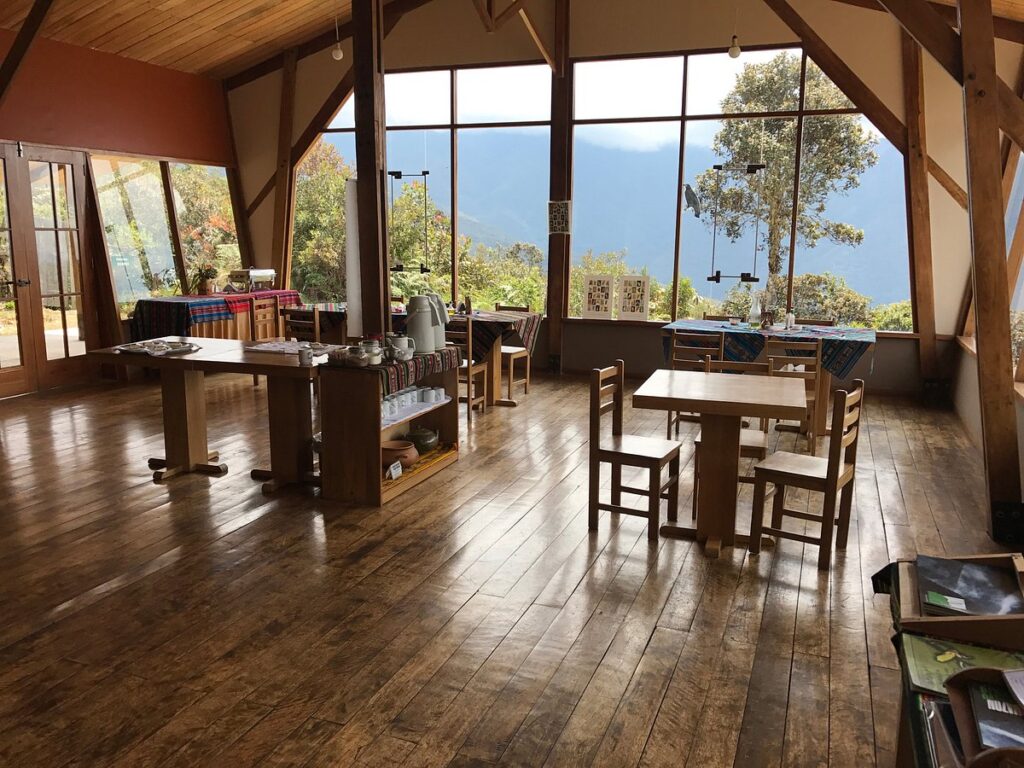
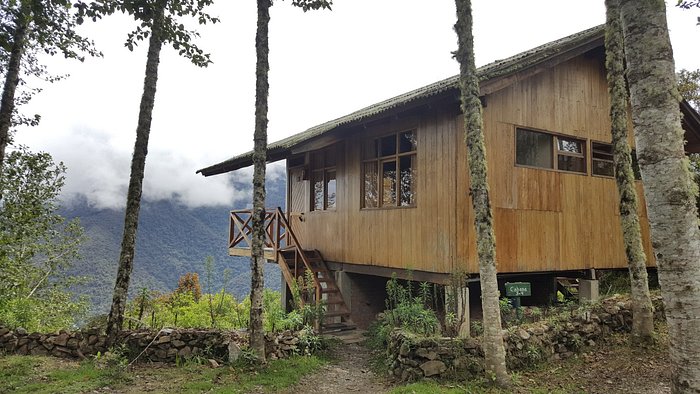
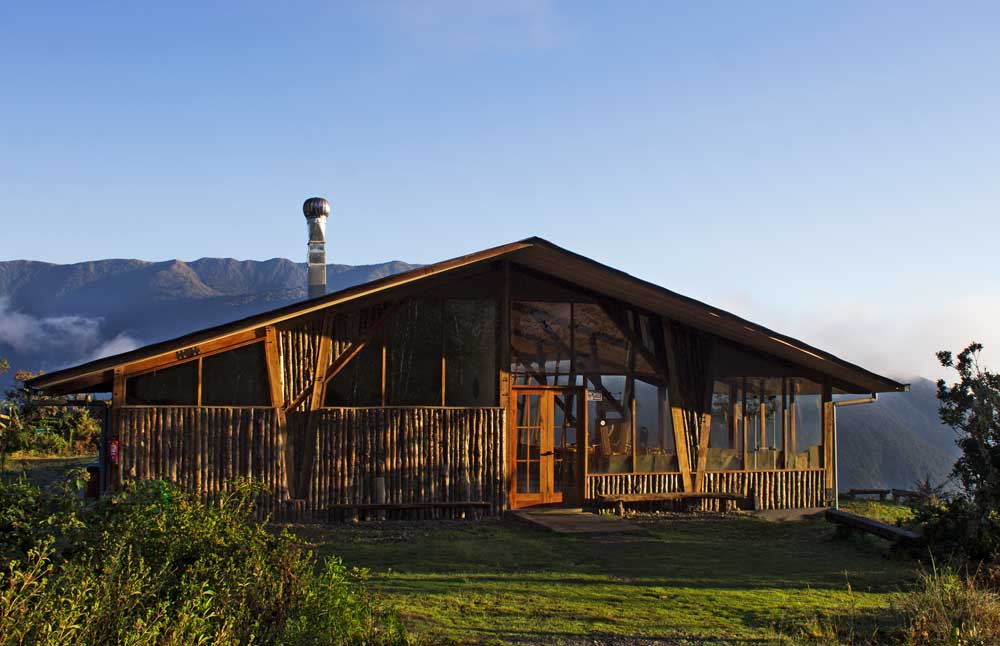
How to Include Wayquecha in Your Birding Itinerary
Wayquecha Lodge is an essential stop on any birding tour along Manu Road. Most birders combine a stay here with visits to lower-elevation sites such as:
- Cock of the Rock Lodge (mid-elevation cloud forest, 1,600m)
- Amazonia Lodge (lowland rainforest birding)
- Manu Wildlife Center (deep Amazon birding, including macaw clay licks)
You would be able to visit Wayquecha lodge in the following tours:
BIRDING AND CULTURE IN MACHUPICCHU AND MANU ROAD (13 days) Check our Fixed Departures.
BIRDING FROM ANDES TO THE AMAZONIA (8 days)
BIRD PHOTOGRAPHY IN MACHUPICCHU & MANU NATIONAL PARK
A classic Manu Road birding tour typically includes 1-3 nights at Wayquecha to fully explore the trails and maximize species counts.
Final Thoughts
For birdwatchers, Wayquecha Lodge is a truly special destination—one that offers an incredible variety of high-Andean cloud forest species, breathtaking scenery, and a direct contribution to conservation. Whether you’re scanning for mountain-tanagers, listening for antpittas, or hoping to catch a glimpse of a Spectacled Bear, this high-elevation gem should be at the top of your Manu Road birding itinerary.

